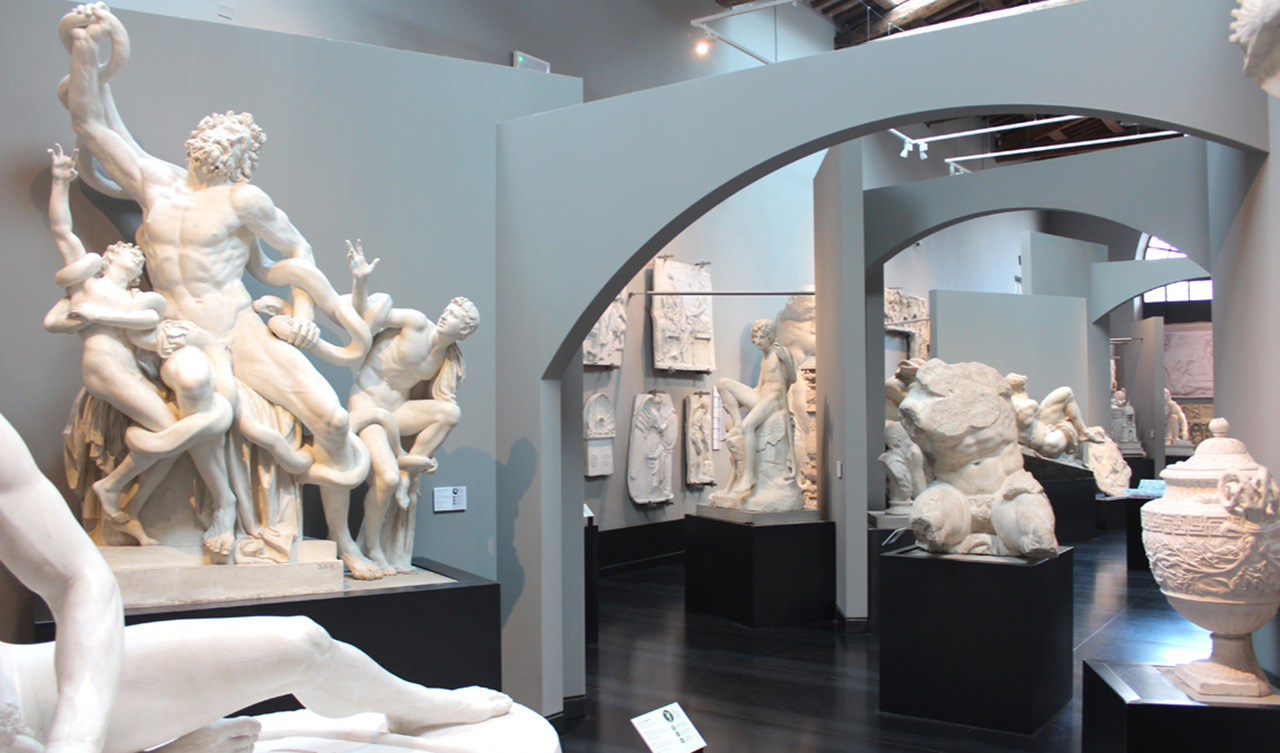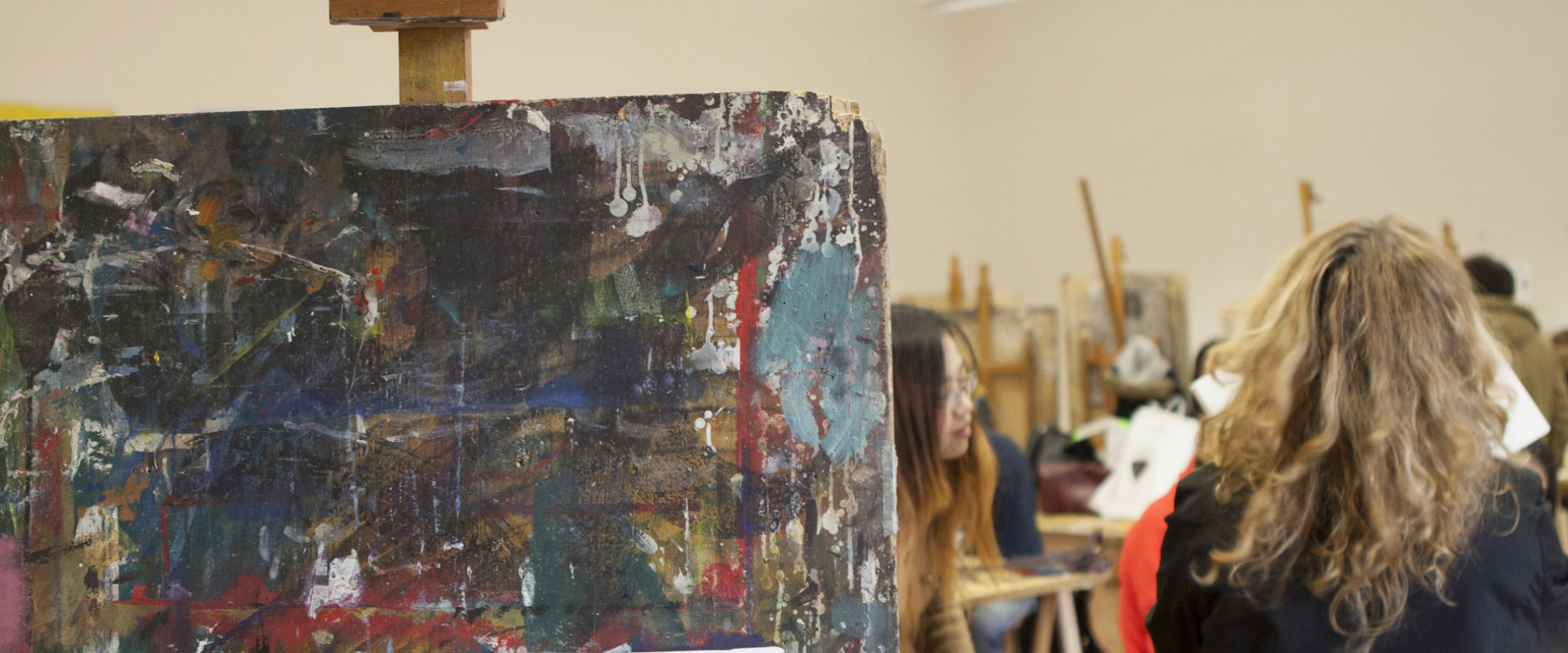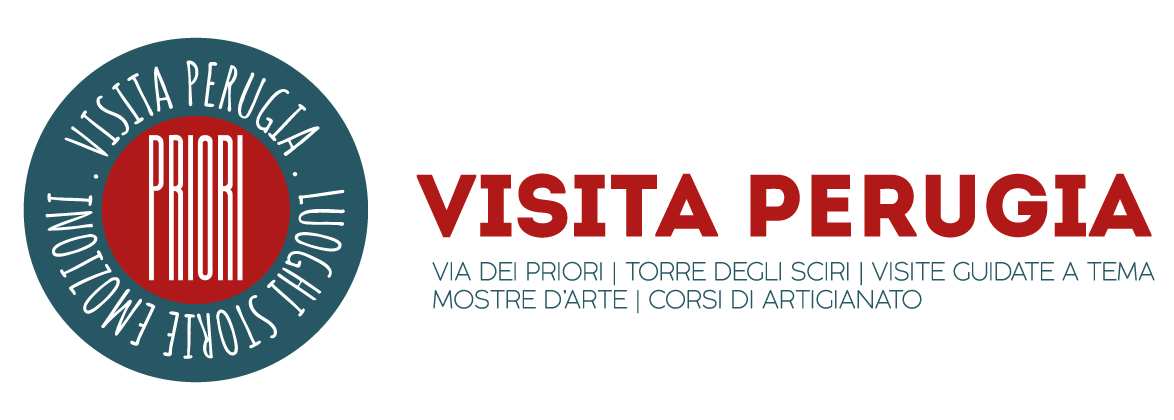

Museum of the Academy. It preserves a priceless historical-artistic heritage: the preparatory plasterworks of important works of European sculpture, such as original casts executed on the works of Luca Della Robbia, the plasterwork of the Medici tombs sculpted by Michelangelo and his pupil Vincenzo Danti, the plasterwork of Antonio Canova from La morte di Priamo (partially lost in 2013[5]) and the preparatory plasterwork of Le tre Grazie, or of Pastorello with the dog by Bertel Thorvaldsen; here is also located the cabinet of drawings which includes, among others, extraordinary graphic works by Giovan Battista Piranesi and Jean-Baptiste Wicar, and the gallery of paintings ranging from works by Carl Christian Vogel von Vogelstein to Alberto Burri.

The museum preserves a significant selection of the heritage of the Accademia di Belle Arti Foundation. The collection, begun in the second half of the sixteenth century, includes the gipsoteca, with about 600 plasterworks, including the gigantic Ercole Farnese and Il Laocoonte, as well as the works of the aforementioned Danti, Michelangelo, Canova (original plasterworks donated by the artist) and Thorvaldsen. The gallery preserves 430 paintings, including works by Annibale Brugnoli, Domenico Bruschi, Armando Spadini, Mario Mafai, Alberto Burri and Gerardo Dottori and the collection of graphics, with 12,000 drawings and 6,300 engravings.

Pietro Vannucci Academy of Fine Arts. It is a university for the study of visual arts balanced and legally recognized that is located in Perugia. Founded in 1573, with the name of Accademia del Disegno, it is the second oldest academy in Italy. It is in the name of the famous Umbrian painter Pietro Vannucci, better known as the Perugino. It owes its origin to a group of painters and architects led by the painter Orazio Alfani and the architect-mathematician Raffaello Sozi who wanted to emulate the institution founded in Florence by Cosimo I de’ Medici. The great modernization of the institute was carried out around 1820 by Tommaso Minardi, a student of Antonio Canova, director and teacher of painting who reorganized from the educational and administrative point of view the Academy of Drawing neoclassically renamed Academy of Fine Arts, giving it the character of an institution of public education and flanking it a museum containing examples of ancient and modern art and a rich library, as well as establishing scholarships to give deserving young people the opportunity to perfect their studies also in other Italian cities, especially in Rome. In the nineteenth century the Academy is a guide and example to the arts not only of Umbria and sees operating within it notable protagonists in the historical-artistic and architectural field, such as Baldassarre Orsini, Carlo Labruzzi, Guglielmo Calderini, Silvestro Valeri. After several trips (first in the Alessian Oratory of Sant’Angelo della Pace in Porta Sole and then in the former Vanvitellian Convent of Montemorcino Nuovo) the institute found its definitive headquarters at the beginning of the twentieth century, in the former Convent of San Francesco al Prato where it houses the library (comprising almost 17,000 bibliographic units). At the beginning of the new century, now firmly organized, the Academy not only maintains its function by counting authoritative masters such as Pietro Angelini, Gerardo Dottori, Arturo Checchi, but also inaugurates a special school: the School of Industrial Art institutionally distinguished although annexed to the structure that, in 1923, will give rise to the Institute of Art ‘Bernardino di Betto’, stationed in 1928. The Perugian Academy obtained the equalization to the state academies only in 1940 with royal decree of 25 June n.1086.
Address
Piazza San Francesco al Prato, 5
Opening time
Thursday and Friday
From 3:30 p.m. to 6:30 p.m.
Saturday and Sunday
From 10:30 a.m. to 1:30 p.m. and from 3:30 p.m. to 6:30 p.m.
Entrance
Full € 4,00 | Reduced € 3,00
(wheelchair accessible)
Contacts and info
musa@sistemamuseo.it
Aba Perugia

